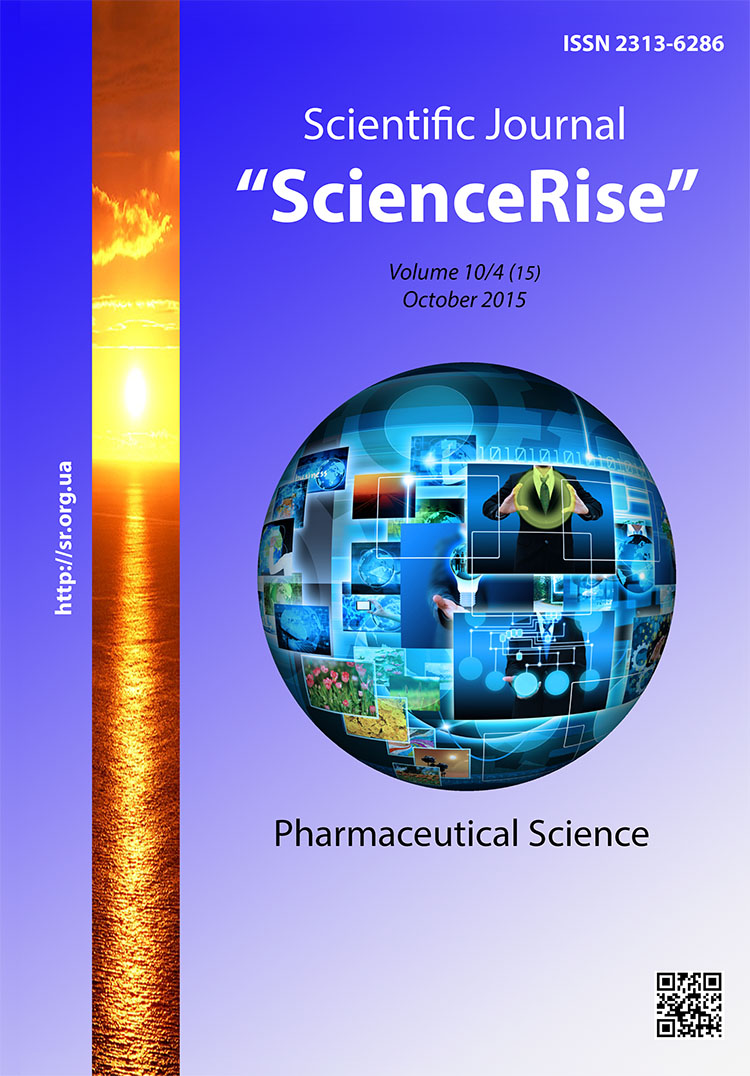Study of products counterfeiting protection technologies on the Ukrainian pharmaceutical market
DOI:
https://doi.org/10.15587/2313-8416.2015.51989Keywords:
promising areas, holographic technologies, protection of drugs, counterfeiting, thermal indicators, packagingAbstract
Aim: According to WHO, in recent years, manufacturers of counterfeit medicines have reached such a "skill" that their products are difficult to distinguish from the originals even for health professionals, and the use of such drugs can be dangerous to health and life.
Given that drug forgers endanger the health of people who, not getting the required treatment, are at risk of losing life, protection of medicines is essential in the fight against counterfeiting. The problem of counterfeit medicines is quite relevant for Ukraine. It is known that on the shelves of local pharmacies there is more than 20 % of counterfeit drugs. Particularly acute the problem becomes in times of epidemics (eg seasonal diseases).
Counterfeit drugs might represent a direct danger to life and health of a patient if composed of substandard ingredients or indirectly for those people who take placebos without getting the desired effect.
Methods: Figuring out the importance of packages and labels for a consumer, the use of thermal indicators for monitoring the transportation and storage conditions of drugs.
Results: The most common protection against counterfeiting are holograms envisaged by package layout, developed by the official manufacturer. As for the special protection methods, experts in the future offer to protect packaging with microstickers, radiomarkers, special paints, etc. Ukraine receives additional directions in the fight against substandard and counterfeit medicines in the form of access to the database of Pharmaceutical Inspections of leading countries, but for today in the world there is still no 100% protection against counterfeiting
Conclusions: In the article the significance of labels and packages for a consumer has been revealed; types of counterfeiting that exist in the pharmaceutical market have been listed; the results of research of technologies that protect products from counterfeiting and the use of holograms on the packaging of pharmaceutical products have been reflected; a comparison of falsified drug "No-spa" with original one has been carried out; statistics of drugs that are the most often exposed to falsification has been given; foreign methods of drugs protection have been studied; Application of thermal indicators for monitoring conditions of transportation and storage of drugs has been justified
References
Toporkov, A. A. (2002). Glavnaja zadacha nadzor za farmacevticheskoj dejatel'nost'ju. Farmacevticheskij vestnik, 3, 3.
Nikolaev, A., Odinokov, S. (2004). Sredstvo ot golovnoj boli. Golograficheskie tehnologii – na zashhitu farmpreparatov. Geologija servis. Available at: http://www.holograms.ru/?id=8&pg=1&id1=3
Bulaev, V. M. (2002). Kak udostoverit'sja v kachestve? Farmacevticheskij vestnik, 6 (245), 17.
Toporkov, A. A. (2002). Presech' dejanija fal'sifikatorov. Farmacevticheskij vestnik, 2, 20–21.
Evrokomissija soobshhila o vnedrenii novoj tehnologii bor'by s fal'sifikaciej preparatov (2012). Ezhenedel'nik apteka, 35 (856). Available at: http://www.apteka.ua/article/159419
Samye populjarnye lekarstvennye poddelki (2014). Chernyj spisok. Available at: http://posovesti.com.ua/News.aspx?newsID=1138
Sviridko, S. V., Sobko, A. Ju. (2010). Rol' upakovki i jetiketki v prodvizhenii tovarov. Prometej, 3 (33), 159–162.
Hranenie i transportirovka preparatov v sisteme «holodovoj cepi» (2012). Internet – izdanie industrii krasoty. Available at: http://www.1nep.ru/pro/legislation/explanation/182352/
Alexander, V. B., Barker, K. N. (1986). National survey of hospital pharmacy facilities: Space allocations and functions. Amer. J. hosp. pharm., 43 (2), 324–330.
Counterfeit drugs: Guidelines for the development of measures to combat counterfeit drugs (1999). Department of Essential Drugs and Other Medicines World Health Organization. Geneva: WHO, 61. Available at: http://apps.who.int/medicinedocs/en/d/Jh1456e/
Di Giorgio, D. (2008). Counterfeit medicines: Facts and Practical Advice. IMPACT, 178.
Palmeter, D., Mavroidis, P. C. (2004). Dispute Settlement in the World Trade Organization: Practice and Procedure. Practice and Procedure. Cambridge University Press, 352. doi: 10.1017/cbo9781139177931
Hurwitz, M. A. (1991). Bundling patented drugs and medical services: An antitrust analysis. Columbia Law Review, 91 (5), 1188. doi: 10.2307/1122848
Kohlert, C., Kohlert, M., Chistyakova, T., Ivanov, A., Sadykov, I. (2010). Counterfeit-proofing based on the principle of randomness. Kunststoffe international, 7, 32–35.
Naum, N. B. H. (1997). The ASEAN pharmacenticals project. International conference on National Medicinal Drug Policies, 20, 165–168.
Dillon, S. (2002). International trade and economic law and the EU. Oxford. Portland, Oregon, 400.
Sedlacer, H. et. al (1996). Ways of successful strategies in drug research and development. Weinheim New York: VCH, 252.
Downloads
Published
Issue
Section
License
Copyright (c) 2015 Сергій Володимирович Степаненко

This work is licensed under a Creative Commons Attribution 4.0 International License.
Our journal abides by the Creative Commons CC BY copyright rights and permissions for open access journals.
Authors, who are published in this journal, agree to the following conditions:
1. The authors reserve the right to authorship of the work and pass the first publication right of this work to the journal under the terms of a Creative Commons CC BY, which allows others to freely distribute the published research with the obligatory reference to the authors of the original work and the first publication of the work in this journal.
2. The authors have the right to conclude separate supplement agreements that relate to non-exclusive work distribution in the form in which it has been published by the journal (for example, to upload the work to the online storage of the journal or publish it as part of a monograph), provided that the reference to the first publication of the work in this journal is included.

